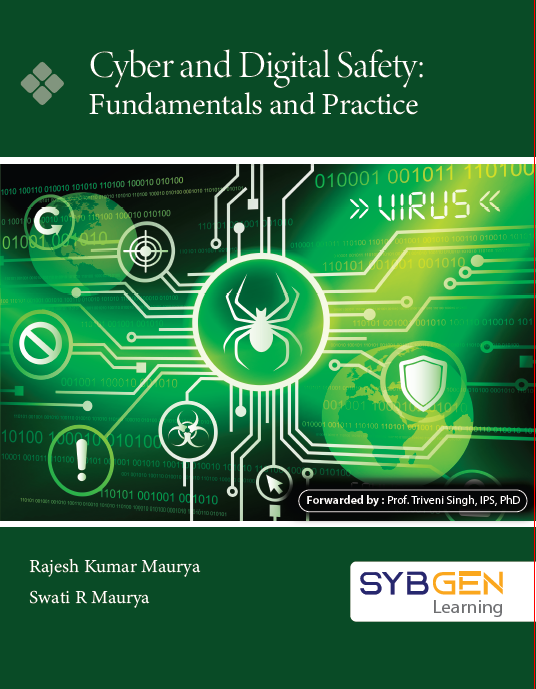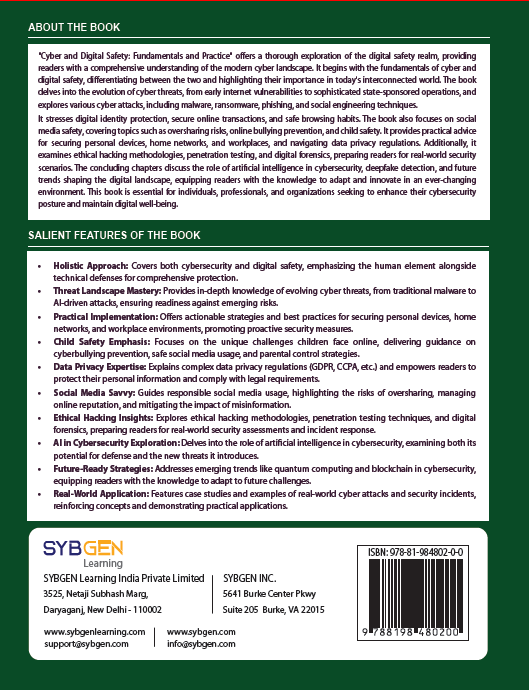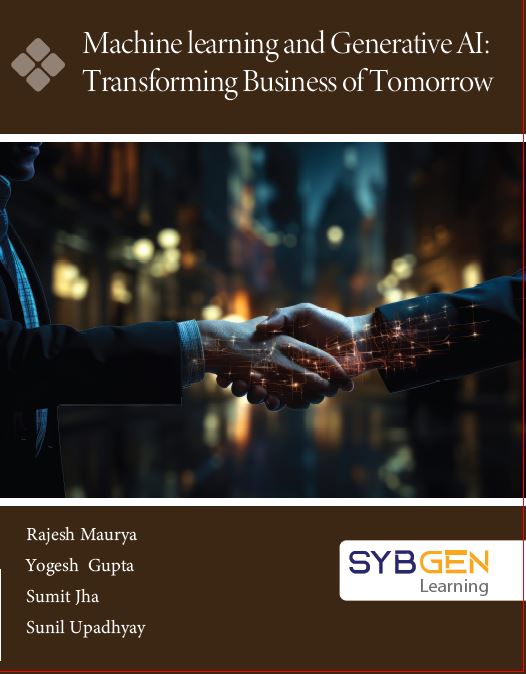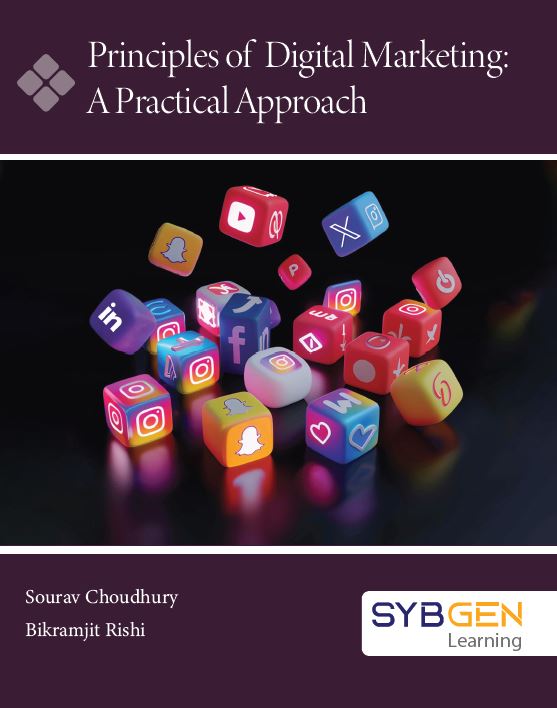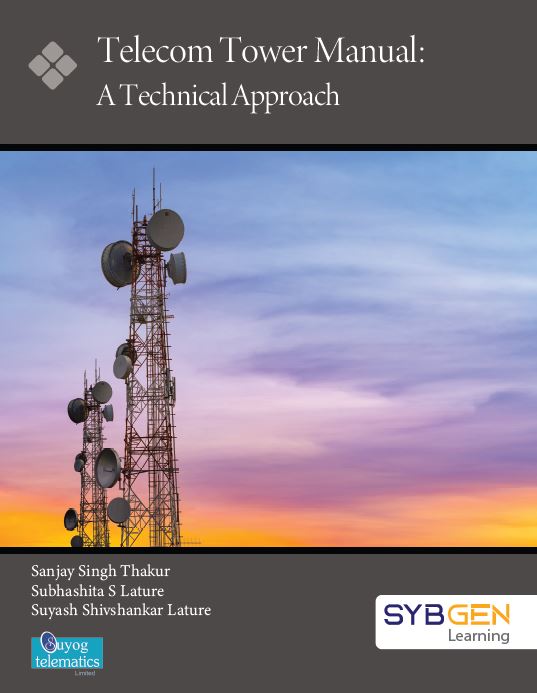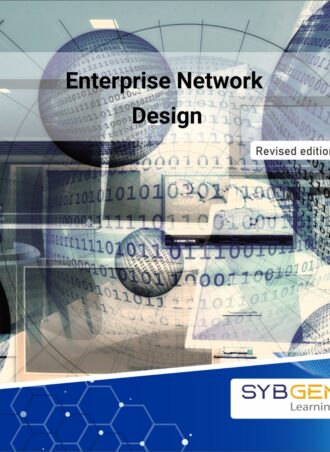Description
We live in a world where digital convenience has quietly become a double-edged sword. A click can open doors to opportunity, connection, and growth—or to surveillance, scams, and harm. For too long, digital safety was treated as a matter of passwords and pop-up warnings. But today, it is inseparable from our identities, our relationships, our finances, and even our emotional well-being.
Cyber and Digital Safety: Fundamentals and Best Practices was born out of the recognition that this subject can no longer be relegated to IT departments or taught only through technical manuals. From children navigating social media and games, to parents trying to protect their families, from educators addressing cyberbullying, to executives facing ransomware demands—everyone is a stakeholder in digital safety now.
This book is designed as both a compass and a companion for anyone seeking clarity, protection, and confidence in the digital age. It is grounded in stories, not just specs. You’ll encounter real-world incidents, lived experiences, and cautionary tales, woven together with practical strategies, legal insights, and psychological awareness. Our aim is to humanize digital safety—because behind every data breach is a person, behind every exploit is a loss, and behind every prevention is a choice.
The structure of the book reflects the journey of digital maturity. It begins with foundational concepts: what it means to be digitally safe, and why this matters to every individual regardless of age or technical background. As the chapters unfold, the scope widens—from understanding threats like malware, phishing, and identity theft, to exploring social media behavior, child safety, and emotional resilience. You’ll find technical depth when needed, such as in chapters on forensics, penetration testing, secure infrastructure, AI threats, and quantum risks. But always with the understanding that technology is never the end; it is the means to empower, protect, and serve people.
Special attention has been given to children, families, and educators—audiences often left out of security discourse but increasingly vulnerable to its consequences. We address not only how harm occurs but also how healing happens—through awareness, dialogue, and community support.
The final chapters turn our gaze to the future. As AI rewrites the rules of threat and defense, and as global laws evolve to catch up with borderless breaches, we ask: what will it take to stay safe in a world where the digital is no longer separate from the real?
This book is not just for experts. It is for every digital citizen—students, parents, teachers, professionals, policymakers—who wants to move from fear to informed action. It offers not only checklists but mindsets. Not only warnings, but frameworks for resilience.
Writing this book has been a collaborative effort involving cybersecurity professionals, legal scholars, psychologists, educators, and survivors of digital harm. Their voices, experiences, and insights have shaped the pages that follow.
To you, the reader: thank you for taking digital safety seriously. You are not just reading a book. You are joining a movement toward a more respectful, ethical, and secure digital society.

